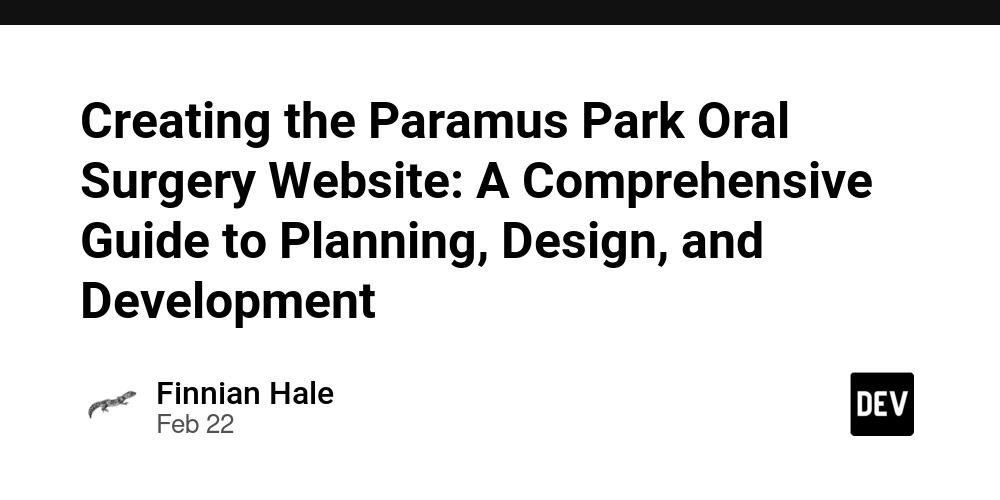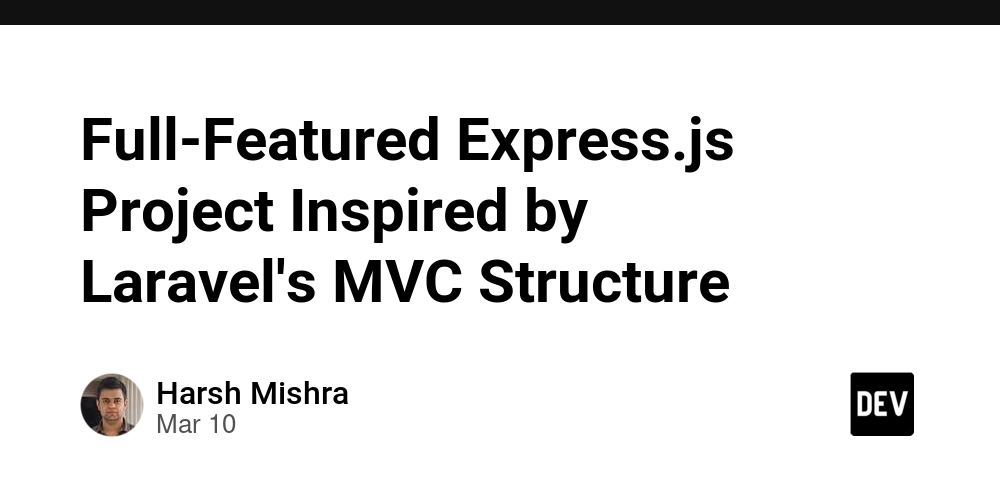Creating the Paramus Park Oral Surgery Website: A Comprehensive Guide to Planning, Design, and Development
In today’s digital age, having a robust and user-friendly online presence is essential for any healthcare provider. When tasked with creating the website for Paramus Park Oral Surgery, our team embarked on a journey to deliver a functional, aesthetically pleasing, and highly informative platform. This article delves into the planning, design, and development phases of the project, highlighting the challenges we faced and the solutions we implemented. With a focus on leveraging languages like C++, Java, and Python, we also explore modern web development trends and best practices, ensuring this narrative is as educational as it is engaging. Planning Phase Defining Objectives The first step in creating the Paramus Park Oral Surgery website was to outline clear objectives: User Accessibility: Ensure the site is intuitive and navigable for patients of all demographics. Responsive Design: Optimize for desktops, tablets, and mobile devices. SEO and Performance: Rank high on search engines and maintain fast load times. Security: Protect sensitive patient data through robust security protocols. Research and Competitor Analysis We conducted thorough research into: Industry standards for healthcare websites. Competitor sites to identify strengths and weaknesses. Patient needs, focusing on scheduling, procedure information, and contact ease. Stakeholder Collaboration Regular meetings with Paramus Park Oral Surgery stakeholders ensured alignment on: Branding elements such as logos, colors, and tone. Content requirements including service descriptions, FAQs, and patient testimonials. Specific technical needs, like a HIPAA-compliant contact form. Design Phase Wireframes and Mockups Using tools like Adobe XD and Figma, we developed wireframes that outlined the site’s structure: Homepage: Featured services, contact info, and a call-to-action for scheduling. Service Pages: Detailed descriptions of oral surgery procedures. Patient Resources: FAQs, insurance details, and pre/post-operative care guides. Contact Page: A secure form integrated with backend systems for appointment requests. Once approved, we created high-fidelity mockups, focusing on: Aesthetic Appeal: Clean, modern design with a calming color palette. Usability: Clear navigation and visual hierarchy. Accessibility Considerations To make the site accessible: We adhered to WCAG 2.1 guidelines. Implemented alt text for images and ARIA roles for dynamic elements. Ensured color contrast met accessibility standards. Development Phase Technology Stack Our chosen tech stack included: Frontend: HTML, CSS, JavaScript (React.js for dynamic components). Backend: Python (Flask) and Java (Spring Boot) for APIs. Database: PostgreSQL for secure and efficient data storage. Security: SSL/TLS protocols and Java-based encryption libraries. Leveraging C++ Though traditionally not a web development language, C++ was utilized for performance-critical backend processes: Appointment Scheduling Engine: A C++ module handled complex scheduling logic efficiently. Data Parsing: C++ scripts processed large patient data files. Integration Challenges and Solutions Challenge 1: Synchronizing Frontend and Backend Problem: Ensuring seamless communication between React.js components and backend APIs built with Flask and Spring Boot. Solution: Utilized RESTful API design principles. Incorporated Axios for robust HTTP requests in React. Challenge 2: HIPAA Compliance Problem: Protecting sensitive patient information during form submissions. Solution: Implemented end-to-end encryption using Java-based libraries. Stored data in a secure PostgreSQL database with access control policies. Challenge 3: Page Load Speed Problem: Ensuring fast load times despite high-resolution images and detailed content. Solution: Compressed images using Python scripts. Enabled lazy loading for media assets. Implemented server-side rendering (SSR) with React.js. Expert Insights on Web Development Trends Embracing Responsive Design With mobile users accounting for over 50% of web traffic, responsive design is non-negotiable. The use of CSS frameworks like Tailwind CSS streamlined the creation of adaptable layouts. AI and Machine Learning While not directly implemented, integrating AI-driven chatbots and predictive analytics could enhance future versions of the site. Security Best Practices Regular vulnerability assessments. Use of Content Security Policy (CSP) headers. Implementing secure coding practices in all backend languages. Future-Proofing The website was built with scalability in mind, ensuring it could handle increased traffic and additional features over time. Testing and Deployment Rigorous Testing We performed extensive testing to ensure: Functionality: All features worked as intended. Performance: Achieved a Google PageSpeed Insights score of over 90. Security: Conducted penetration testing to identify vulnerabilities. Accessibility: Ver

In today’s digital age, having a robust and user-friendly online presence is essential for any healthcare provider. When tasked with creating the website for Paramus Park Oral Surgery, our team embarked on a journey to deliver a functional, aesthetically pleasing, and highly informative platform. This article delves into the planning, design, and development phases of the project, highlighting the challenges we faced and the solutions we implemented. With a focus on leveraging languages like C++, Java, and Python, we also explore modern web development trends and best practices, ensuring this narrative is as educational as it is engaging.
Planning Phase
Defining Objectives
The first step in creating the Paramus Park Oral Surgery website was to outline clear objectives:
User Accessibility: Ensure the site is intuitive and navigable for patients of all demographics.
Responsive Design: Optimize for desktops, tablets, and mobile devices.
SEO and Performance: Rank high on search engines and maintain fast load times.
Security: Protect sensitive patient data through robust security protocols.
Research and Competitor Analysis
We conducted thorough research into:
Industry standards for healthcare websites.
Competitor sites to identify strengths and weaknesses.
Patient needs, focusing on scheduling, procedure information, and contact ease.
Stakeholder Collaboration
Regular meetings with Paramus Park Oral Surgery stakeholders ensured alignment on:
Branding elements such as logos, colors, and tone.
Content requirements including service descriptions, FAQs, and patient testimonials.
Specific technical needs, like a HIPAA-compliant contact form.
Design Phase
Wireframes and Mockups
Using tools like Adobe XD and Figma, we developed wireframes that outlined the site’s structure:
Homepage: Featured services, contact info, and a call-to-action for scheduling.
Service Pages: Detailed descriptions of oral surgery procedures.
Patient Resources: FAQs, insurance details, and pre/post-operative care guides.
Contact Page: A secure form integrated with backend systems for appointment requests.
Once approved, we created high-fidelity mockups, focusing on:
Aesthetic Appeal: Clean, modern design with a calming color palette.
Usability: Clear navigation and visual hierarchy.
Accessibility Considerations
To make the site accessible:
We adhered to WCAG 2.1 guidelines.
Implemented alt text for images and ARIA roles for dynamic elements.
Ensured color contrast met accessibility standards.
Development Phase
Technology Stack
Our chosen tech stack included:
Frontend: HTML, CSS, JavaScript (React.js for dynamic components).
Backend: Python (Flask) and Java (Spring Boot) for APIs.
Database: PostgreSQL for secure and efficient data storage.
Security: SSL/TLS protocols and Java-based encryption libraries.
Leveraging C++
Though traditionally not a web development language, C++ was utilized for performance-critical backend processes:
Appointment Scheduling Engine: A C++ module handled complex scheduling logic efficiently.
Data Parsing: C++ scripts processed large patient data files.
Integration Challenges and Solutions
Challenge 1: Synchronizing Frontend and Backend
Problem: Ensuring seamless communication between React.js components and backend APIs built with Flask and Spring Boot.
Solution:
Utilized RESTful API design principles.
Incorporated Axios for robust HTTP requests in React.
Challenge 2: HIPAA Compliance
Problem: Protecting sensitive patient information during form submissions.
Solution:
Implemented end-to-end encryption using Java-based libraries.
Stored data in a secure PostgreSQL database with access control policies.
Challenge 3: Page Load Speed
Problem: Ensuring fast load times despite high-resolution images and detailed content.
Solution:
Compressed images using Python scripts.
Enabled lazy loading for media assets.
Implemented server-side rendering (SSR) with React.js.
Expert Insights on Web Development Trends
Embracing Responsive Design
With mobile users accounting for over 50% of web traffic, responsive design is non-negotiable. The use of CSS frameworks like Tailwind CSS streamlined the creation of adaptable layouts.
AI and Machine Learning
While not directly implemented, integrating AI-driven chatbots and predictive analytics could enhance future versions of the site.
Security Best Practices
Regular vulnerability assessments.
Use of Content Security Policy (CSP) headers.
Implementing secure coding practices in all backend languages.
Future-Proofing
The website was built with scalability in mind, ensuring it could handle increased traffic and additional features over time.
Testing and Deployment
Rigorous Testing
We performed extensive testing to ensure:
Functionality: All features worked as intended.
Performance: Achieved a Google PageSpeed Insights score of over 90.
Security: Conducted penetration testing to identify vulnerabilities.
Accessibility: Verified compliance with accessibility standards.
Deployment Strategy
The website was deployed using Docker containers for consistent environments and hosted on AWS for reliability and scalability.
Conclusion
The Paramus Park Oral Surgery website stands as a testament to the power of collaboration, innovative technology, and user-centric design. By addressing challenges head-on and leveraging modern web development practices, we delivered a platform that meets the needs of both the practice and its patients. This project highlights the importance of thorough planning, adaptable design, and secure, scalable development in crafting websites that truly make an impact.











































































































































































![[The AI Show Episode 142]: ChatGPT’s New Image Generator, Studio Ghibli Craze and Backlash, Gemini 2.5, OpenAI Academy, 4o Updates, Vibe Marketing & xAI Acquires X](https://www.marketingaiinstitute.com/hubfs/ep%20142%20cover.png)




























































































































![[DEALS] The Premium Learn to Code Certification Bundle (97% off) & Other Deals Up To 98% Off – Offers End Soon!](https://www.javacodegeeks.com/wp-content/uploads/2012/12/jcg-logo.jpg)


![From drop-out to software architect with Jason Lengstorf [Podcast #167]](https://cdn.hashnode.com/res/hashnode/image/upload/v1743796461357/f3d19cd7-e6f5-4d7c-8bfc-eb974bc8da68.png?#)








































































































.png?#)

































_Christophe_Coat_Alamy.jpg?#)
 (1).webp?#)





































































































![Apple Considers Delaying Smart Home Hub Until 2026 [Gurman]](https://www.iclarified.com/images/news/96946/96946/96946-640.jpg)
![iPhone 17 Pro Won't Feature Two-Toned Back [Gurman]](https://www.iclarified.com/images/news/96944/96944/96944-640.jpg)
![Tariffs Threaten Apple's $999 iPhone Price Point in the U.S. [Gurman]](https://www.iclarified.com/images/news/96943/96943/96943-640.jpg)


































































































































![Clojure Is Awesome!!! [PART 22]](https://media2.dev.to/dynamic/image/width%3D1000,height%3D500,fit%3Dcover,gravity%3Dauto,format%3Dauto/https:%2F%2Fdev-to-uploads.s3.amazonaws.com%2Fuploads%2Farticles%2Fn8juyt42ku5u6eun5qxx.jpg)

